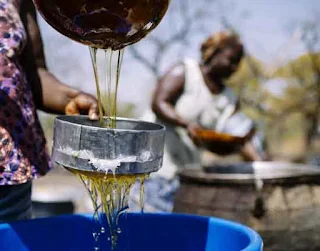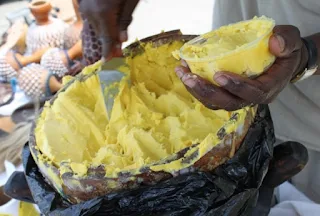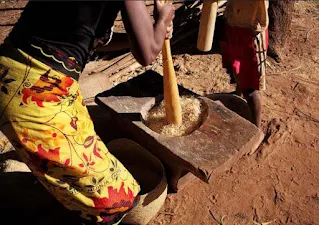Ugali vs Fufu — The Difference Between Africa’s Beloved Staples
Across Africa, two staple dishes define comfort and culture: Ugali from East and Southern Africa, and Fufu from West and Central Africa. Both are starch-based foods eaten daily, yet their preparation, ingredients, and cultural roots differ beautifully.

Making Ugali in Kenya
Ugali Recipe
Ingredients
- 4 cups finely ground cornmeal
- 8 cups water
Directions
- Boil water in a saucepan.
- Slowly pour in the cornmeal while stirring continuously.
- Add more cornmeal if needed until it reaches a soft, dough-like texture.
- Serve warm with stews, greens, or beans — Ugali is purposely mild to complement flavorful sauces.

Pounding Fufu in Ghana
Plantain Fufu Recipe
Ingredients
- 3 green or ripe plantains
- 1¼ cups all-purpose flour
- 1 teaspoon salt
- Water for boiling
Directions
- Peel and cut plantains evenly.
- Boil in water for 20 minutes until soft.
- Mix boiled plantains, salt, and flour, kneading into a smooth dough.
- Shape into balls or serve with soups and stews. Fufu should be stiffer than mashed potatoes.
Did You Know?
Fufu (also spelled Foufou, Foofoo, or Fufuo) is eaten across West Africa — from Ghana and Nigeria to Sierra Leone and Togo. Ugali goes by many names: Pap in South Africa, Sadza in Zimbabwe, Nsima in Malawi, Mealie in Lesotho, and Chenge or Bando in East Africa.
Frequently Asked Questions — Ugali vs Fufu
What is the main difference between Ugali and Fufu?
Ugali is made from cornmeal and boiled into a dough, while Fufu is made from boiled and pounded starchy crops like yam or plantain.
Is Ugali the same as Pap or Sadza?
Yes. Ugali is called Pap in South Africa, Sadza in Zimbabwe, and Nsima in Malawi — all regional versions of the same staple dish.
Can I make Fufu without pounding?
Yes. Many African markets now sell powdered Fufu mix that can be boiled directly without traditional pounding.
Staples like ugali and fufu are not just foods—they are systems shaped by land, labor, fuel, and history. Explore African foodways beyond recipes →




















